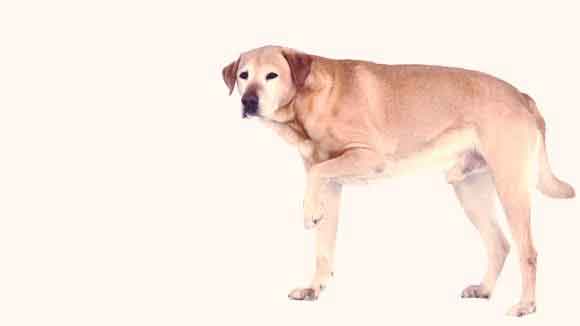Laurie's Blogs.
Nov 2019
Dealing with a Nagging Injury

Do you have a patient that just isn’t getting better? Or perhaps he/she has a recurring injury that has you (and the owner) frustrated and wondering what to do? Well, that’s the topic of today’s blog! Dealing with nagging injuries (usually chronic soft tissue or joint injuries) requires a different approach than dealing with an acute injury.
I was inspired by a ‘human’ blog, http://www.tdathletesedge.com/blog/2018/10/10/nagging-injuries. It began by discussing how rest, stretching, and ice are not appropriate solutions to chronic or nagging injuries. It outlined a 3-step process that health providers and consumers can follow in dealing with these types on injuries.
Let’s dive in!
STEP 1: Is the source of discomfort the true problem area, or is the issue coming from somewhere else? So, in the case of a nagging injury, a full body assessment is necessary. I could likely leave it at that, but I think it might be useful to think of some examples. So, if the dog has a rounded back, is the problem in the back? Not always. You’d want to check the iliopsoas, the SIJ, hip and stifle joints. Then you may need to think outside the box, check the diaphragm, visceral fascia, or caudal ribs. And of course, postural compensations can come from anywhere, so each limb, each joint, and all of the tendons and muscles should be palpated or moved to get a complete picture of how the dog is functioning. As a patient or client, it’s important to look for a health provider who will perform a full assessment before dispensing advice.
STEP 2: The next step in dealing with a nagging injury is to identify what the patient CAN do and ways that they CAN keep moving. Loading tissues appropriately is a better than resting them completely… especially with these chronic cases. Rest might make a nagging injury temporarily better, but without appropriate loading of tissue or movement or stabilization of a joint, the issue will resurface as soon as activity does. Besides that, the body doesn’t like to be stagnant. So surely there are some safe exercises that can be prescribed!
With nagging injuries, it’s such a frustrating cycle. Injury. Rest. Re-engage in activity. Re-injure. Rest… and so on! Compare the two sets of advice for a dog with an iliopsoas strain below:
1.“I know this is frustrating. You’re likely going to have to rest him for long this time.”
2.“Okay, we can work him through this. We’re going to take an active approach and work towards strengthening this muscle right away here. I want you to work on backing up exercises and three-leg stands (3 sets of 30 seconds, 3 times per day) to begin with, and leash walks cutting your distance or time in half to start. Well build from there.”
If it’s your dog with that nagging, recurring injury, whose advice would you rather take? So, as a patient of client, it’s important to find a health provider who will give you safe and appropriate activities that you can do to begin strengthening an area within tolerance.
STEP 3: The third step to solving nagging injuries is to guide the patient (or client) toward understanding the healing process and managing expectations throughout rehab. In the nagging injury scenario, the issue isn’t new. It likely didn’t start overnight, and it’s not been 100% for a long time. So, a quick fix isn’t going to create a lasting change! It will take time, patience, and some hard work. As well, the healing isn’t always going to be linear. There will be ups and downs.
Thus, it is important for a client to know that as you do or prescribe therapies or exercises, there will be times when the tissue / injury flares up a little bit. I tell people that their dog may be sore that evening or even the next day, but then things should resolve. Even a 48-hour flare-up of pain or lameness might be okay. However, if swelling, lameness of pain persists beyond that, then these may be indicators that too much was done.
In the case of a chronic injury, it might be scary to agree to a treatment regimen that might aggravate symptoms. However, it’s a small price to pay for a long-term gain. The alternate is to become a potato!
With all of these things in mind, you are set to appropriately tackle the management of a nagging injury. As a practitioner, you need to have a progressive plan. As a client, you need to look for someone that will provide active therapies to get you (and/or your dog) better. Nagging injuries are frustrating indeed, but a progressive plan of action that involves safe loading of tissues is key!


